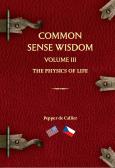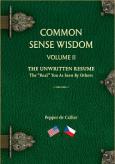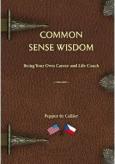The “Rosetta Stone” of Leadership 2-2
As a CEO, picture your next year-end Board of Directors Meeting. You walk in, sit down, and deliver the following message: “Ladies and gentlemen of the Board, today I’d like to share some performance results with you. Our productivity has surpassed our previous all-time high, absenteeism is at an historic low, employee retention is up 26 per cent, the most recent study has shown that our customer service satisfaction numbers are at the top of our industry, and our earnings per share number this year is 2.6 times greater than our industry peer group.” If this doesn’t sound like what you’re actually anticipating for your next year-end Board meeting, you should know that many CEOs have delivered messages with results just like these, and more CEOs will join their ranks this year according to exhaustive global studies conducted by Gallup, the behavioral economics consulting group.
In my last column I wrote that the famous ancient Egyptian artifact known as the Rosetta Stone, has for centuries been used metaphorically for something that has explained and resolved what seemed to be an unfathomable mystery. In addition, I reported that Gallup published a study indicating that 80% of the global workforce is either passively or actively disengaged from their jobs, which was found to have a negative impact on the U.S. economy alone of more than $300 billion. Based upon my own research and experience, I stated that, for leaders in the 21st century, their own personal Rosetta Stone would be the discovery of how to unlock the mystery of sustainably engaging their workforces. I closed by saying that I would reveal the Rosetta Stone in this column.
It would be difficult to overstate the importance of employee engagement. It is a commonly held belief that this is far beyond a human resources initiative; employee engagement is a key business strategy. Perhaps one of the most difficult elements of this strategy is that past studies conducted by leading psychologists and behavioral economists tell us that the key driver to employee engagement is not logic—you can’t engage someone in their job by reasoning with them. The decision to become engaged is emotionally driven. Our emotions, it turns out, drive the most important decisions we ever make, including whom to marry, buying a particular house, whether or not to have a child and, right up there in importance is whether or not to be engaged in our job.
In today’s world, leadership is all about knowing what drives results and that’s where The Human Element of Leadership comes in. Allow me to introduce you to what just might be the most important discovery you will ever make regarding your personal success as a leader—your very own Rosetta Stone. The Human Element of Leadership is not about “soft skills”. It’s about soft power—the power that engages people and unleashes their creativity and commitment. It’s what makes people think about their jobs, in a positive way, on their time—on the weekends, while getting ready in the morning or as they go to bed at night, or when they commute to and from work. This is how problems get solved and how break-throughs are made—when people actually want to contribute to their employer.
The importance of The Human Element of Leadership—making a connection with people that goes beyond the transactional—is not opinion, it’s not management theory, it’s fact. And, more importantly, we know it’s what causes people to make a very important, albeit emotional, decision about their job: the decision to become engaged. What are some indications that your team is engaged? According to Gallup, it’s when they can make statements like: “I know what is expected of me. At work, I have the opportunity to do what I do best every day. My supervisor seems to care about me. At work, my opinions seem to count. In the last six months, someone at work has talked to me about my progress. The mission or purpose of my organization makes me feel my job is important.” There are other indicators, but I think you’re getting the drift—it’s about the sustained maintenance of a human connection and giving someone a reason to personally relate to you, to the company, to your customers, and see themselves as a valued member of something larger than themselves.
This not something you can relegate to your human resources department. It begins with you and the way you act. Everything you do, everything you say, the way you treat others, what people overhear you say about others, will either validate or deny a corporate culture of employee engagement. So, it’s up to you how that Board meeting will go and what your legacy as a leader will be. My hope is that both will have something to do with the discovery of your very own version of the Rosetta Stone.




